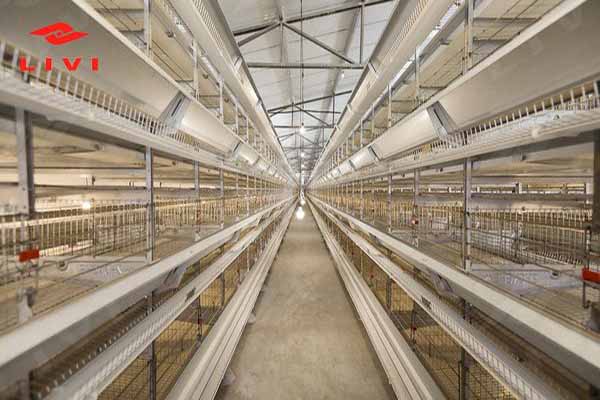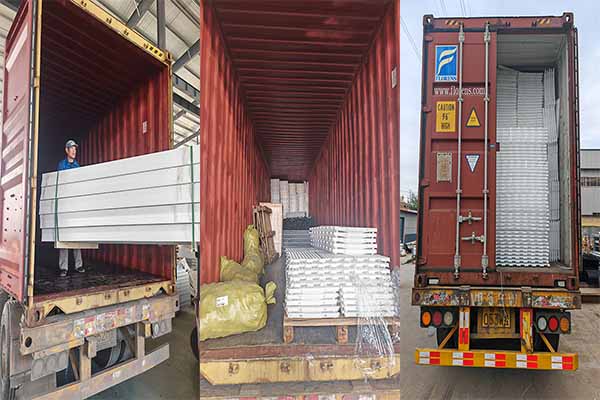Automated Environmental Control Plan for 20,000 Chicken Farms in Kenya
Time : 2025-06-30
In the dynamic poultry industry of Kenya, where chicken farming has grown exponentially, the management of environmental conditions within large-scale farms has become a critical aspect of sustainable and efficient production. This article outlines an automated environmental control plan designed for a network of 20,000 chicken farms in Kenya. By integrating advanced technology and professional poultry equipment knowledge, this plan aims to enhance farm productivity, animal welfare, and operational efficiency.

Introduction to Automated Environmental Control in Poultry Farms
Automated environmental control systems are essential in poultry farming to maintain optimal conditions for the growth and health of chickens. These systems regulate temperature, humidity, air quality, and light levels, ensuring that the chickens are raised in a stress-free environment. The scale of 20,000 chicken farms in Kenya necessitates a robust and scalable solution that can be implemented across multiple locations.

Key Components of the Automated Environmental Control Plan
1. Environmental Monitoring Sensors
At the heart of the automated system are sensors that continuously monitor the environmental parameters in each farm. These sensors include temperature, humidity, ammonia levels, and carbon dioxide levels. The data collected is crucial for real-time adjustments to the farm’s environment.
1.1 Types of Sensors Used
- Temperature Sensors: RTD or thermocouples for accuracy and reliability.
- Humidity Sensors: Capacitive or resistive humidity sensors to maintain optimal moisture levels.
- Ammonia and Carbon Dioxide Sensors: Electrochemical or semiconductor sensors to monitor air quality.
2. Central Control System
The central control system processes the data received from the sensors and makes real-time adjustments to the farm’s environment. This system is typically a combination of hardware and software, designed to handle large volumes of data and execute complex algorithms.
2.1 Hardware Components
- Server or Cloud-Based Infrastructure: To handle the processing and storage of large datasets.
- PLC (Programmable Logic Controller): To automate the control functions and respond to sensor inputs.
2.2 Software Components
- Control Software: To manage the sensors, execute control strategies, and generate reports.
- Database: To store historical data for analysis and to facilitate predictive maintenance.
3. Actuation Devices
Actuation devices are used to adjust the farm’s environment based on the signals received from the central control system. These include fans, air exchangers, humidifiers, dehumidifiers, and lighting systems.
3.1 Fan and Air Exchanger Systems
Fans and air exchangers are crucial for maintaining air flow and air quality. They help in diluting ammonia and carbon dioxide levels, reducing the risk of respiratory diseases in chickens.
3.2 Humidification and Dehumidification Systems
Humidity control is vital for chicken health and comfort. Humidifiers and dehumidifiers adjust the relative humidity to optimal levels, preventing heat stress and respiratory issues.
3.3 Lighting Systems
Lighting plays a significant role in the poultry growth cycle. Automated lighting systems adjust the intensity, duration, and color spectrum of light to match the chickens’ natural photoperiod and promote healthy growth.
Implementation Strategy for 20,000 Chicken Farms
Implementing an automated environmental control plan across 20,000 chicken farms requires a phased approach to ensure seamless integration and minimal disruption to ongoing operations.
1. Initial Assessment and Planning
Each farm will undergo a thorough assessment to determine the specific environmental requirements and the existing infrastructure. This will involve mapping out the layout of the farm, identifying sensor placement points, and determining the capacity of the central control system.
2. Rollout of Sensors and Control Systems
Once the planning phase is complete, sensors and control systems will be installed in each farm. This process will be carried out by trained technicians to ensure proper installation and minimal downtime.
3. Training and Support
Operators will be trained on how to use the control systems and interpret the data. Ongoing support will be provided to address any issues that arise and to ensure the systems are functioning optimally.
4. Continuous Monitoring and Im provement
provement
Regular monitoring of the systems will be essential to ensure they are meeting the farm’s environmental needs. Feedback from the farms will be used to continuously improve the control strategies and to make adjustments as necessary.
Conclusion
The automated environmental control plan for 20,000 chicken farms in Kenya represents a significant step forward in the integration of technology and professional poultry equipment into the industry. By maintaining optimal environmental conditions, this plan aims to enhance farm productivity, animal welfare, and operational efficiency, ultimately contributing to the growth and sustainability of the Kenyan poultry sector.











